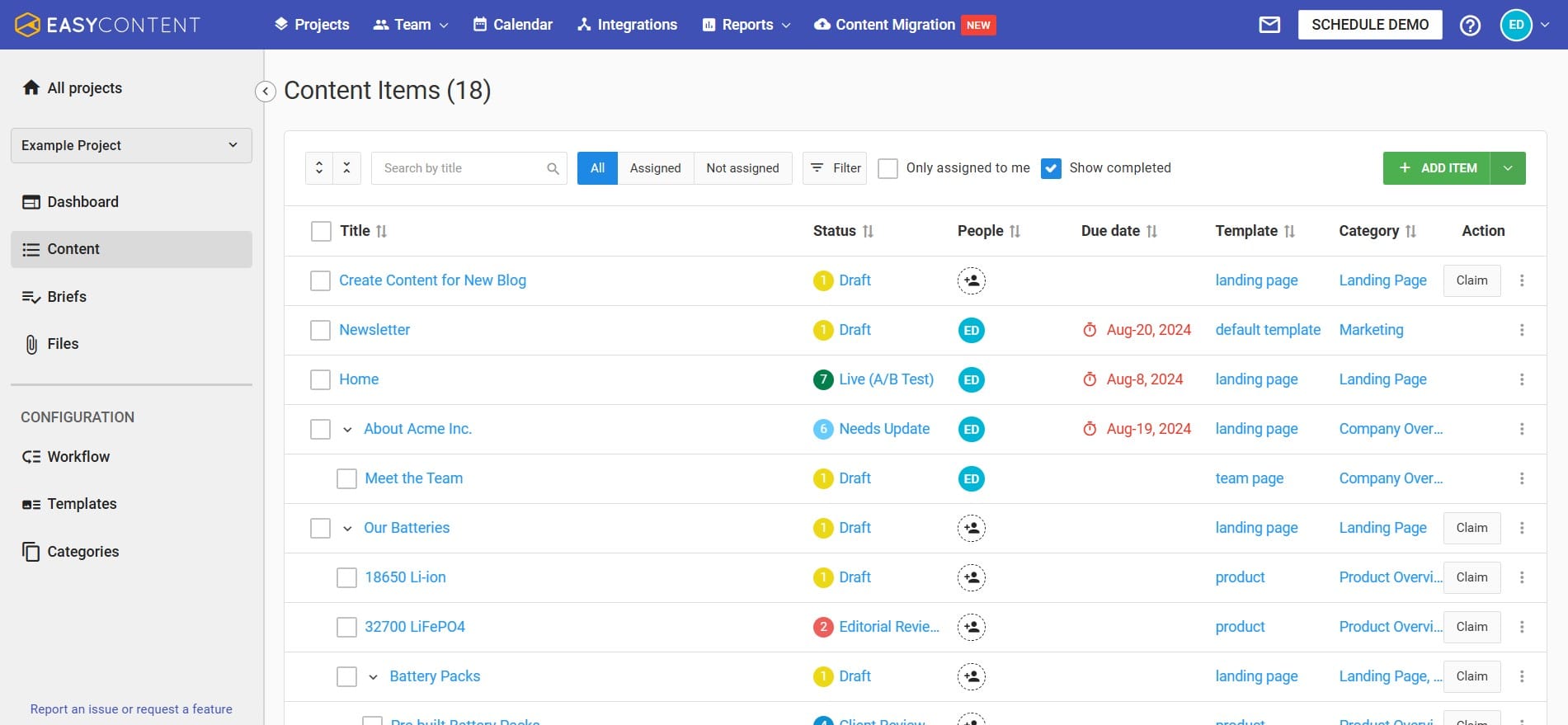How to Set Clear Roles and Responsibilities in Content Teams Without Conflict
Clearly defined roles = better collaboration, faster approvals, and less stress. Assign tasks by skill, avoid overlaps, and automate workflows with the right tools like EasyContent.

What it means to have clear roles in content teams
When team members don't know what their jobs are, chaos happens:
- Some tasks are done twice or don't get done at all.
- Approvals get hung up
- Members of the team are angry and stressed.
✅ Clear jobs lead to faster work, higher quality, and less stress.
Key Takeaways
- Role confusion leads to duplicate work, delays, and stress.
- Clear responsibilities improve speed, quality, and collaboration.
- Avoid unclear ownership and overloaded roles to prevent tension.
- Writers, editors, designers, strategists, and managers must have distinct tasks.
- Role-based workflows reduce micromanagement and enhance productivity.
- EasyContent simplifies task assignment, tracking, and approvals in one hub.
- Revisit roles regularly to stay flexible and aligned as your team grows.
- Common pitfalls include unclear approval chains and missing style guides.
Common Mistakes When Roles Are Not Clear
- Putting too many people on one job at once makes the work look bad.
- No one is responsible for it anymore, so nothing gets done.
- Decisions that are late: "Who agrees with this?" Everything is held up.
- Anger: Some partners do too much and others don't do enough.
Key Roles in a Successful Content Team
| Role | Responsibility |
|---|---|
| ✍️ Writers | Create clear, engaging, and on-brand content |
| 🧐 Editors | Ensure accuracy, consistency, and tone alignment |
| 🎨 Designers | Create visuals to support and elevate the message |
| 📊 Strategists | Plan content, optimize SEO, and track performance |
| 📅 Project Managers | Maintain timelines, assign tasks, manage workflow |
| ✅ Approvers | Give final sign-off aligned with business goals |
Create a Role-Based Workflow
1.Give people jobs based on their skills.
Let people do what they're good at, like writers, managers, and so on.
2.Make ownership clear early on
What is okay with who? When? What do you think will happen?
3.Do not micromanage.
Let team members do their own thing, but use tools like EasyContent to keep track of their work.

How EasyContent Can Help
EasyContent makes work easier by:
- Setting clear jobs and who is responsible for each task
- Automating permits to cut down on email exchanges
- Keeping track of changes, notes, and progress in one place
It takes the place of disorganized email lines and files with a single, well-organized hub.
Evolve Roles as You Grow
- Look over your tasks often.
- Change processes when people or tools come on board.
- Structure can help, but being stiff kills imagination.
Do not make these mistakes
❌ Not clear approval chains
❌ We don't have an internal style guide.
❌Poorly explained changes in roles
❌There are no feedback loops or check-ins.
Final Thoughts
Clear jobs keep things from getting confusing, speed up work, and make it easier for people to work together. If you want to grow your team or fix a broken process, you should first make sure that everyone knows what their job is and that you have the right tools.
➡️ This tool can help your team go from "Who's doing what?" to "We're done already!"






